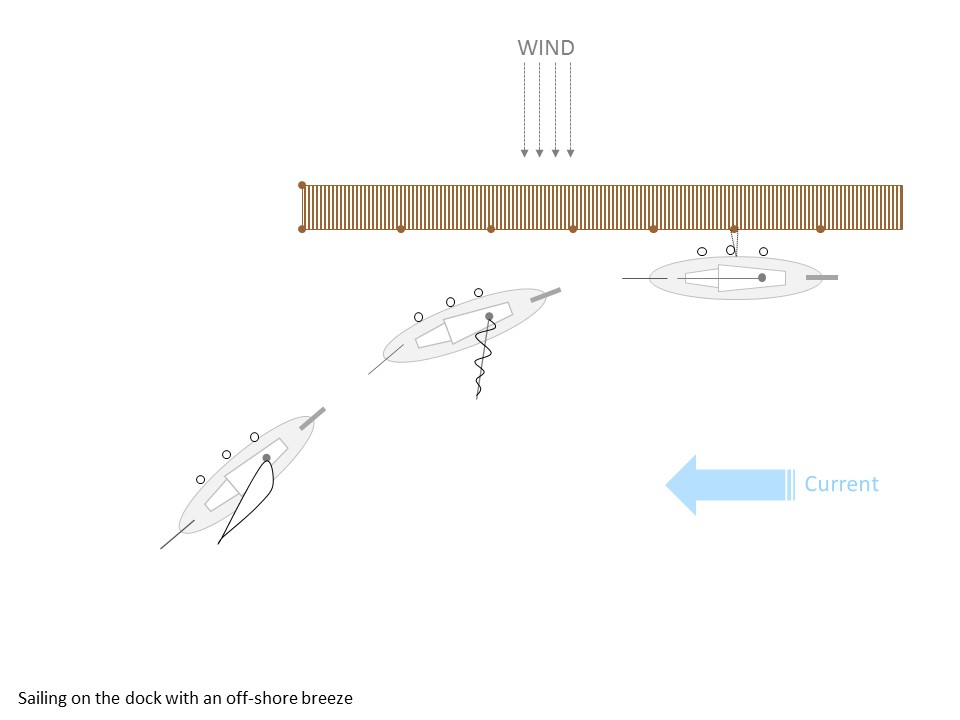
Seamanship – for me – means practicing skills that make me nervous and challenge my abilities to handle a sailboat
I’ve been watching the US Coast Guard’s efforts to build a skills-based standard for recreational boat operation for some time and with mild skepticism. The effort was started in June of 2011 as the National On-Water Standards Project in an effort to add consistency in instruction and ultimately to reduce the number of injuries and fatalities associated with recreational boat operation.
My focus is on the standard for sailing vessels, which applies to small keel boats and dinghies under 26 feet.
The standards appear to require the novice sailor to successfully demonstrate various aspects of the sailing experience, including but not limited to prepping the boat, completing maneuvers under sail and sailing the boat on and off the dock.
The latter of these requirements were surprising to me, because I have found this to be an uncommon skill among small keelboat boat sailors. However, I think it’s an important skill: engines quit at inconvenient times and it’s truly one of the singular expressions of seamanship.
My own boat is a Frances 26, a classic double ended, full keel, sloop-rigged vessel that varies from others of her design by having a full cabin and short bow sprit. Having sailed on and off the dock a number of times on my own boat, I am aware of the difficulties and have completed numerous gel-coat repairs as a result of my practice.
Sailing off the Dock
When sailing off the dock, the key issue for me is which force acting on the boat is greater: current or wind? In my experience – and with my boat – if the current is greater than the wind, I wait for slack tide. Leaving the dock under sail is usually fairly easy in all types of wind and current, unless the wind is blowing you onto the dock.
I feel that it’s best in this case to re-position the vessel by warping it around using two dock lines. With one crew member on the bow line and one on the stern line, the stern is pushed out toward the open water, strain is taken on the stern line which is outboard to the vessel and the bow is walked down the dock.

Once turned, the vessel is moved to the end of the dock, so that the wind is now a head wind. The mainsail is raised and allowed to luff, while a slipped stern spring line allows the bow to fall off and catch the wind. As the vessel sails off into clear water, the slipped spring line is hauled in from the boat.
Arriving Under Sail
When arrivng under sail, I’ve found that coming in with a breeze blowing you off the dock is preferable. It allows the most control and is more forgiving of mistakes. I usually approach this docking on a close reach under mainsail alone, preferably with an opposing current parallel to the dock.
When I’m about a boat length off the dock, I put the tiller over slightly to start bringing the vessel parallel to the dock. I let the mainsail luff when starting to go parallel to the dock and use a mid-ships spring line to stop and hold the vessel on the dock.

The key feature is that the vessel needs to touch the dock at the end of the arc and the mid-ships line needs to get on a cleat right away. The bow will start to fall off immediately, so timing is important.
If all else fails, I tack away and try again.
Seamanship as the Standard
I still view the On-Water Standards Project with some skepticism, my cynical nature usually questions partnerships between industry and regulatory agencies. However, I think that the intent is worthwhile and necessary in our increasingly crowded waterways.
Part of the effort that fascinates me is that the standards are set up in such a way that they aren’t focused on what is trained, but rather what skills are learned. I think this is a worthwhile effort and intend to test my own seamanship against the standard.
REFERENCES:
FitzGerald, J. Sea-Steading: A Life of Hope and Freedom on the Last Viable Frontier. Lincoln, NB: iUniverse, 2006.
United States Coast Guard and US Sailing. National System of Standards for Recreational Boat Operation: Sail Standard & Rubric Version 4. Updated August 2016. http://www.onwaterstandards.org/.
Wells, D. Stress-Free Sailing: Single and Short-Handed Techniques. London: Bloomsbury, 2015.
Trending Now: Must-Have Boat Gear for Your Boat Life
-
Starlink Mini Kit for High-Speed, Portable Internet on the Go
$599.00 Quick ViewBuy on West Marine -
Mustang Survival Lil’ Legends Infant Jacket
$69.00 Quick ViewBuy on West Marine -
Spinlock Deckvest Junior Inflatable Life Jacket
$209.00 Quick ViewBuy on West Marine -
Inflatable Floating Pet Ramp
$249.00 Quick ViewBuy on West Marine
Trending Now: Custom Boat Decor
-
Boat Pillow with Boat Name & LAT LONG Coordinates
Quick ViewBuy on Etsy -
Boat Pillow with Boat Name & LAT LONG Coordinates- Black
Quick ViewBuy on Etsy -
Coastal Blue Stripes Bathmat with Anchor & Boat Name
Quick ViewBuy on Etsy -
Custom Boat Mat with Boat Name & LAT LONG Coordinates
Quick ViewBuy on Etsy
Disclosure: This site may contain links affiliated with companies where we receive compensation. Also, as an Amazon Associate we may earn from qualifying purchases we refer but it does not impact the price you pay. Full disclosure policy.











